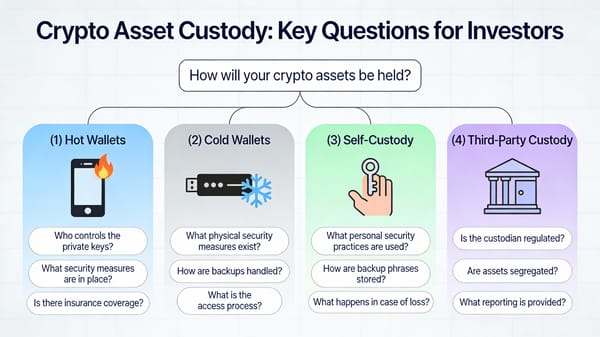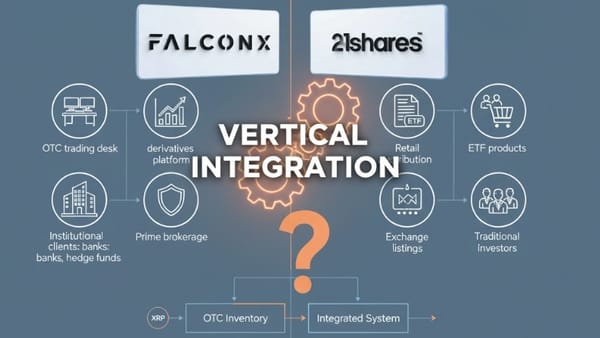Trump Opens $9T Retirement Market to Crypto and Private Assets
Trump's executive order will allow crypto, private equity & real estate in 401(k) plans, opening $9T retirement market. Bitcoin, ETH & XRP surge on news. Major policy shift will reverse Biden restrictions, but fiduciary risks remain.

President Donald Trump will sign an executive order Thursday allowing alternative assets including cryptocurrencies, private equity, and real estate into 401(k) retirement plans, marking a watershed moment for the crypto industry's quest to reach mainstream retirement savers. The policy could open access to more than $12 trillion in employer-based defined contribution retirement plans, with approximately $9 trillion held in 401(k) accounts.
Breaking Down Regulatory Barriers
The executive order will direct the Labor Department to reevaluate guidance around alternative asset investments in retirement plans subject to the Employee Retirement Income Security Act of 1974 (ERISA). This represents a complete reversal of the Biden administration's cautious approach to crypto in retirement accounts.
In May 2025, the Department of Labor had already rescinded its 2022 guidance that advised fiduciaries to "exercise extreme care" before including cryptocurrencies in 401(k) investment menus. "We're rolling back this overreach and making it clear that investment decisions should be made by fiduciaries, not DC bureaucrats," said U.S. Secretary of Labor Lori Chavez-DeRemer.
The timing aligns with broader crypto-friendly initiatives from the Trump administration. The executive order builds on recent crypto momentum in Washington, including the passage of the GENIUS Act in July, which established a regulatory framework for stablecoins.
Market Response and Industry Impact
Financial markets reacted swiftly to the announcement. Bitcoin jumped more than 2% while Ethereum rose 7.3% and XRP gained 4.1% on Thursday morning. Crypto-related stocks including Coinbase, Robinhood, and MicroStrategy all posted gains exceeding 1.5%.
Bryan Corbett, president and CEO of the Managed Funds Association, touted the anticipated order as giving investors the ability to further diversify their investment portfolios. "Expanding access to alternative investments in 401(k) retirement plans will provide more Americans with the diversification and investment options needed to build wealth and save for a successful retirement," he stated.
Several major asset managers have already positioned themselves for this shift. BlackRock announced it's launching a 401(k) target-date fund in the first half of 2026 that will include a 5% to 20% allocation to private investments. Apollo Global Management and State Street have released target-date funds with private-markets components, while Blue Owl Capital indicated it will collaborate with Voya on 401(k) products including private markets.
Regulatory Compliance and Fiduciary Challenges
Despite the policy shift, retirement plan fiduciaries still face significant responsibilities under ERISA's stringent standards. Courts have commonly referred to ERISA's prudence and loyalty obligations as the "highest known to the law," with fiduciaries personally liable for losses resulting from breaches.
The Employee Retirement Income Security Act imposes strict fiduciary duties on plan sponsors, requiring them to act in the best interest of participants. Key considerations include:
Conservative Allocation Limits: Experts recommend capping crypto exposure at 1%–5% of portfolios for conservative investors to minimize downside risk.
Enhanced Disclosure Requirements: Clear, plain-language risk disclosures are essential to ensure participants understand the speculative nature of crypto.
Institutional Custody Solutions: Partnering with regulated custodians, such as Fidelity or Coinbase Institutional, can address security concerns.
Plan sponsors will need to adapt to complex fee structures and double-digit expense ratios, while asset managers must contend with frequent contributions and withdrawals in defined-contribution plans.
XRP and Ripple: Navigating Complex Regulatory Waters
For XRP and Ripple, the executive order presents both opportunities and challenges within a complex regulatory landscape. XRP gained 4.1% following reports of the executive order, reflecting market optimism about expanded accessibility.
However, XRP's inclusion in retirement plans remains complicated by its regulatory status. Earlier this year, Trump's strategic crypto reserve executive order designated XRP as a "Stockpile Asset," meaning the government can only hold or sell existing holdings without making new purchases. This disappointed many in the "XRP Army" who had expected inclusion in the strategic Bitcoin reserve after Ripple's significant political contributions.
Potential Benefits for XRP:
- If ongoing SEC issues are resolved favorably, XRP could benefit from the framework laid out by Trump's executive order, with regulatory clarity encouraging exchanges and institutional investors to adopt XRP without fear of regulatory repercussions
- Ripple could further scale its On-Demand Liquidity solutions, utilizing XRP as a bridge currency for cross-border payments within retirement portfolios seeking international exposure
- The order's emphasis on protecting access to public blockchains aligns with XRP's design as a decentralized digital asset
Regulatory Headwinds:
- XRP still faces uncertainty regarding its classification as a security by the SEC
- Reports suggest Trump felt manipulated by Ripple-connected lobbyists regarding his earlier XRP statements, potentially affecting future policy considerations
Long-term Implications and Risks
Widespread inclusion of bitcoin and crypto in Americans' retirement accounts has long been viewed as a holy grail for crypto adoption, potentially making cryptocurrency a mainstay of U.S. financial infrastructure. The retirement market is currently worth $43 trillion, almost $9 trillion of which is held in 401(k) plans, compared to crypto's nearly $4 trillion market cap.
However, significant risks remain. The SEC has cautioned that cryptocurrency investment is highly speculative, with extreme price volatility due to valuation uncertainties, speculative conduct, and widely published incidents of theft and fraud. Critics worry that private equity and crypto are too risky and illiquid for workplace retirement plans, where employees might need hardship withdrawals during tough economic times.
Implementation faces significant operational hurdles, as this is largely uncharted territory. Early adopters face heightened litigation risks, as one material hiccup could tank the entire proposition for the foreseeable future.
Bottom Line
Trump's executive order will represent a seismic shift in retirement investing, potentially unlocking trillions in new capital for alternative assets including crypto. While offering unprecedented diversification opportunities for retirement savers, the move requires careful navigation of fiduciary responsibilities and risk management. For XRP specifically, success will largely depend on resolving ongoing regulatory uncertainties with the SEC. Plan sponsors considering crypto integration should proceed cautiously, ensuring robust risk disclosure and conservative allocation limits while partnering with institutional-grade custody solutions.
DISCLAIMER: This newsletter is for informational purposes only and does not constitute investment advice or a recommendation to buy, sell, or hold any securities. Investments in cryptocurrencies or other financial assets carry significant risks, including the potential for total loss, extreme volatility, and regulatory uncertainty. Past performance is not indicative of future results. Always consult a qualified financial professional and conduct thorough research before making any investment decisions.



